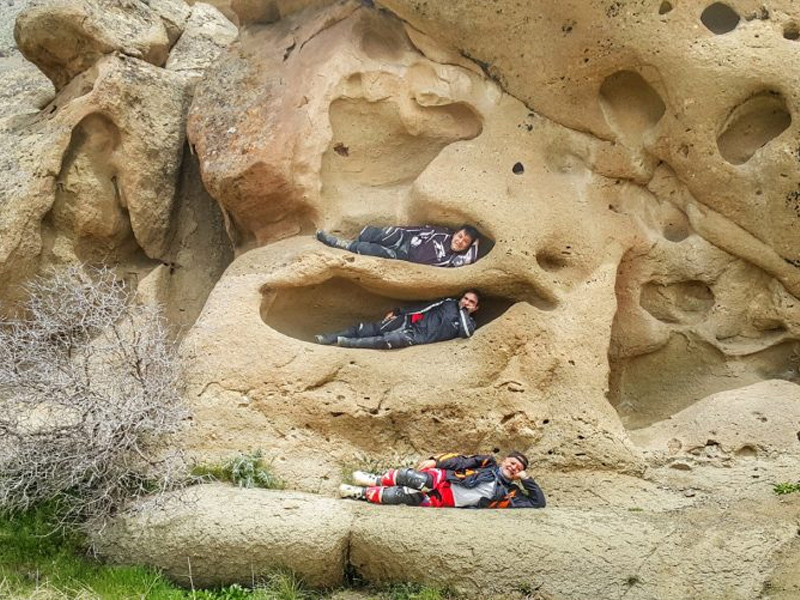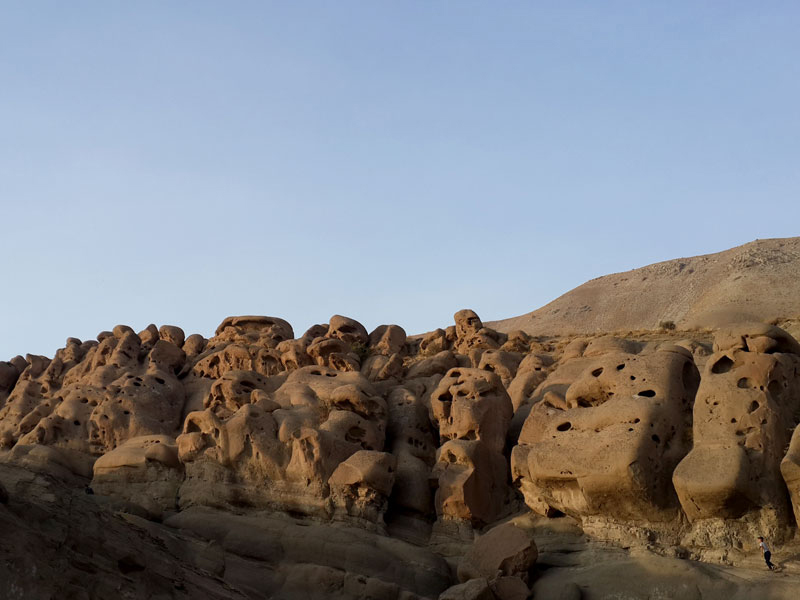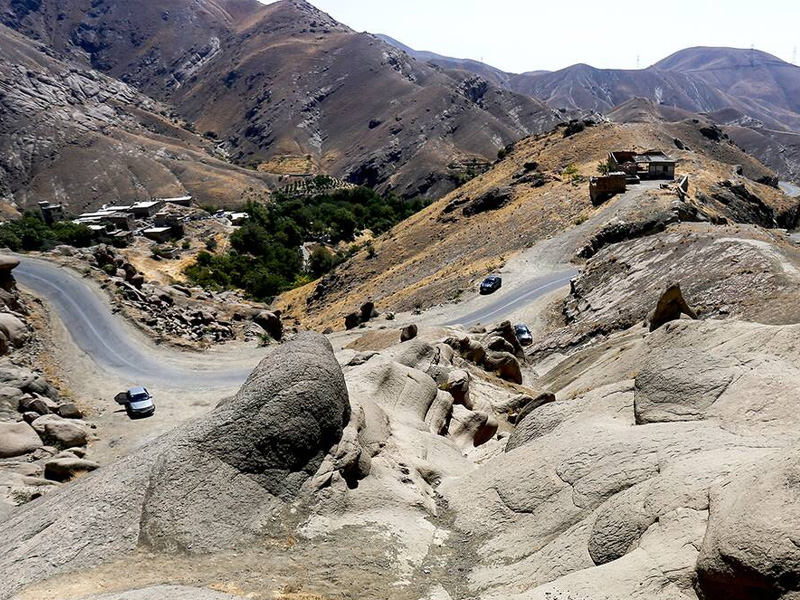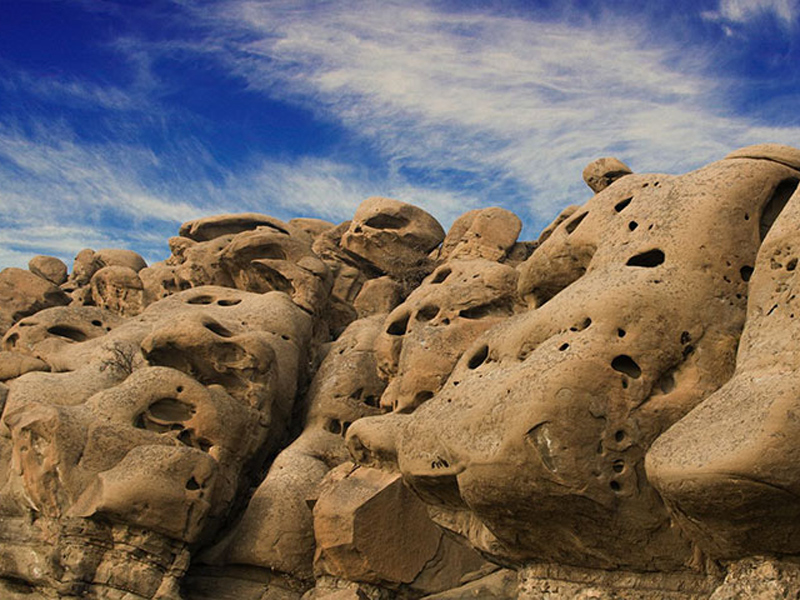Vardij Village is a beautiful destination for a day trip, especially for residents of Tehran, particularly those in the western part of the capital. Due to its mountainous terrain in the northern region of Tehran, the villages located in these areas enjoy a clean and excellent climate for recreation.
Whether you are a resident of Tehran or planning a trip to the city, Vardij Village is a great destination for spending a joyful day in beautiful natural surroundings. Join us in this article from Eligasht to learn more about Vardij Village, its accessibility, and the attractions in and around the village.
Book Iran Air flights from London to Tehran and Tehran to London with Eligasht UK:
Introduction to Vardij Village in Tehran
Vardij Village is one of the most picturesque mountainous areas in Tehran, located in the northwest of the capital. It falls under the jurisdiction of the Kan and Suleqan districts in Tehran and is situated within the boundaries of District 22 of Tehran. Due to the presence of high mountains in Tehran, the city has prominent opportunities for mountain tourism. Vardij Village is considered the largest village in the northwest of Tehran and is highly suitable for mountain climbing enthusiasts.
Access Route to Vardij Village
Vardij Village is noteworthy due to its location on the route to Lichah Peak and the heights of Hasar. This village is situated at the western end of Tehran and benefits from the west-to-east winds and its considerable elevation, making it unaffected by the city’s pollution.
The distance between the city center of Tehran and Vardij Village is approximately 40 kilometers. Depending on the area you are in Tehran, you can take one of the Karaj, Hamedan, or Tehran-Karaj highways towards Vardij Village. The entrance to Vardij Village is direct and located on the Karaj highway. If you reach the Hemmat Highway, you can easily access the Karaj Highway along its western extension and, after traveling a distance of about eight kilometers, reach the Vardij road exit. If you are on the Sheikh Fazlollah Highway, you can enter the Tehran-Karaj Highway and reach the Vardij Highway via the Ardestan Highway. You can also reach the Karaj Highway through the Hakim and Allameh Jafari highways, or enter the Karaj Highway from the Ardestan Highway and reach the Vardij Village Road.

Vardij Village
Vardij Village is situated eight kilometers from this road. The access route to Vardij from this road is very scenic and enjoyable, but during rainy weather or cold seasons, it can be dangerous to travel on it. The road is asphalted and has many twists and turns. The famous and beautiful slope of Stone Spirits is located along this road and in the vicinity of Vardij Village. There is no need to pay any fees to visit Vardij Village and the Stone Spirits slope.
Enjoying the Rural Weather
The pleasant weather of this village and its quick and easy accessibility from Tehran have turned Vardij Village into a popular destination for tourists residing in the capital. On the other hand, the famous rocky pass on the way to Vardij Village attracts many tourists to this area. In Vardij Village and its surrounding nature, there are lush and beautiful gardens, a gushing river, tall mountains, and deep valleys. The majority of gardens in this village consist of walnut, apple, quince, mulberry, and medlar trees. The springs and the river located in Vardij Village provide abundant water supply for irrigating these gardens. For many residents of the capital city, a one-day trip to an area with clean air and lush nature is essential.
Location of Vardij Village
Vardij Village has approximately 550 residents. Due to the severe cold in this area during the second half of the year and the disruption of the village’s connection to Tehran in times of heavy snowfall, some of the village’s residents are absent during this period. The rural houses are located in the southern part of the village, and despite significant restrictions on construction in this area, the presence of newly built villas has altered the old fabric of Vardij Village.
History of Vardij Village
The natural waterfalls, rocks, and sculptural stones along the paths of Vardij Village tell the extraordinary story of the millions of years of this region’s existence. Although there is no precise information about when this village was formed and settled, the appearance of the hollow rocks on the road to Vardij Village used to serve as a good refuge in the past. The indigenous people of this area also hold the same belief. The people of Vardij Village believe that their ancestors resided in a castle that existed in this area, although today they consider the formation of these hollows to be a result of natural erosion.
Age of the Rocks
According to geologists, the age of the rocks in this area is estimated to be around 30 to 40 million years. According to the geological viewpoint, regions that contain remnants of volcanic mountain sediments were erupting over 35 million years ago. The present appearance of these rocks has been shaped by the influence of natural factors on the sediment deposits from past periods. Examples of these rocks can also be found in other regions of the world and Iran, including Kandovan Village in Tabriz.
Since the formation of rocks and stones is natural, it is not possible to accurately predict their lifespan. Despite their tens of millions of years of existence, it can be said that the erosion of these rocks has increased from 200,000 to 100,000 years ago until today. According to many experts in this field, any human intervention in preserving and maintaining the rocks in the domain of the “Stone Ghosts” area is a mistake, and the natural erosion process should continue. However, some scientists are trying to have this area listed as a World Heritage site, but their efforts have not yielded any results so far.

Do you know where the village of Vardij is located?
The village of Vardij is located in District 22 of Tehran city. It is situated in the highlands overlooking the western valley of Khan. Its elevation from sea level is 1,850 meters. To reach the village of Vardij, you need to head west from Tehran.
Traveling on the village road in winter is very dangerous due to the cold weather conditions and the difficulty of passing through the roads in this area. If you intend to visit Vardij during this season, you should observe safety precautions.
What is the best time to travel to the village of Vardij?
In the summer season, when the heat in Tehran becomes unbearable, Vardij village has cool weather, which is desirable for tourists and travelers in this region. The fruit trees in the gardens bear fruit during the summer, and you can escape the heat of Tehran by temporarily residing near the river and enjoying the cool weather of this village.
The autumn and spring seasons have cold weather in the village, but the diverse colors of the autumn trees in Vardij create beautiful landscapes. In spring, beautiful blossoms enchant all the villages, and the foothills are filled with flowers and greenery. If you want to visit Vardij during these mentioned seasons, make sure to bring warm clothes to protect yourself from the cold. Early autumn and late spring are more suitable for strolling in this village. Moreover, this time is also the best for mountaineers interested in climbing the peaks of this area.
The best time to travel to the beautiful village of Vardij is from late spring to early autumn.
The area where Vardij village is located is mountainous, and its climate is considered a cold region. Traveling in this area during rainy periods, especially in winter, poses significant dangers. On the other hand, during winter and most cold days of the year when the region is covered in snow and ice, the road to Vardij village becomes blocked, making it difficult or, in other words, impossible to reach the village. However, according to the villagers, nowadays, road maintenance vehicles quickly reopen the road during rainy and snowy conditions. Nevertheless, crossing the winding mountain passes during these times has its own risks.
Staying in Vardij village
For accommodation in Vardij village, camping in nature is the only option available. However, since the villagers do not welcome the accommodation of travelers, there are not many facilities for this purpose. Vardij village is very close to Tehran, making it highly suitable for a one-day trip. If you are interested in visiting the natural beauties around this village, with proper planning and being an early riser, you can explore the extraordinary village and its surrounding attractions in a day and enjoy its beauty. The houses in Vardij village are privately owned, and the villagers have no interest in renting their houses for the accommodation of travelers. Although the houses in this village have amenities such as electricity and landline telephones, mobile phone coverage is not available in most parts of the route and villages.
Attractions around Vardij village
Due to the private nature of the lands and gardens in Vardij village, travelers and nature enthusiasts can’t visit them. However, there are plenty of attractions around Vardij village. The nature surrounding this village is very pristine and untouched, and the presence of abundant springs and roaring rivers provides excellent opportunities for nature exploration.
Jiyan Adamak Rocks
One of the main reasons for the fame of the village of Vardij is the presence of a famous area known as the “Jiyan Adamak” (Giant Doll) Rocks on the way to accessing this village. After entering the Vardij road and continuing along this road for about 15 minutes and approximately 6 kilometers from the route, you would reach an area covered with rocks and stones with a very peculiar appearance. The rocks and stones in this area have strange and peculiar shapes resembling the bodies and heads of animals. The unnatural shape of these rocks has attracted the attention of many travelers to this area and has given rise to rumors.
The locals of the area refer to these rocks as “Jiyan Adamak” (Giant Doll). According to some local people, there used to be a castle on this mountain, and the pitted rocks are the remnants of this castle. Others describe mysterious legends of animals turning into stone in this area. However, all these theories are common superstitions that have been circulating for years and passed down from generation to generation. What is certain is that the rocks and stones in this area have taken on these shapes due to erosion over many years, but the reason why a small part of the path in this mountain has undergone transformation remains unknown. The area of the Stone Spirit Domain is considered a unique and exceptional attraction along the route to the village of Vardij, and observing it is very captivating and delightful.

Other Attractions of the Village of Vardij
Another natural attraction of the village of Vardij is the “Latmal” waterfalls. In the surrounding mountains of Vardij, seasonal rivers flow during the spring season, which enhances the beauty of this area. The Latmal waterfall is formed by three short and tall waterfalls, with the tallest waterfall reaching a height of 35 meters. The other two waterfalls have a height of about five meters. The main waterfall, which is the tallest among the three, cascades over the rocks in a staircase-like manner, creating a unique beauty for travelers. There is also a seasonal river, abundant and roaring, alongside the Latmal waterfalls, which becomes very full of water from late winter to spring.
“Lat” means “stone” in the local language, and “Mal” means “to cling.” The reason for naming these waterfalls is the collision of water with the rocks. To reach the Latmal waterfalls, you need to enter the main path of the village, after passing the teacher’s complex, and hike for about an hour. The first waterfall you will see is the shorter one with a height of five meters, and then you reach the subsequent waterfalls. The unparalleled beauty of this waterfall makes the hiking distance enjoyable for nature enthusiasts.
Pahneh Hesar Mountains
Another natural attraction near the village of Vardij that you reach after passing the village of Variš, located in the same area, is the highlands of the Pahneh Hesar Mountains. If you are interested in mountaineering and have experience climbing mountains, conquering the peaks of the Central Alborz Mountains in this area can be enjoyable for you. Along the path of mountaineering in these highlands, you will come across abundant springs, and the Sangane Waterfall also flows in this area, originating from these springs along your hiking route. These mountain ranges extend from the north to the Shahrestanak area on the Chalus Road, from the west to the villages of Khur and the Chalus Road, from the east to the villages of Sangan, Kan, and Soolghan, and from the south to the villages of Variš and Vardij, and finally to the Vardavard region.
Related post
Exploring the Historical Sites in Tehran: A Journey Through Iran’s Capital
Tipps for a budget travel to Tehran| travel guide
Near Vardij Mountains
“Pahne Sar” is the highest peak in the mountain range of this area, known by names such as “Pahne Hesar,” “Poshte Band,” and “Gandomchal.”
“Cheshme Shahi” is another route for mountain climbers and is one of the famous peaks in this area.
Pahne Hesar Peak is located in the northern part, and Cheshme Shahi is situated in the southern section, with a plain called Pahne Hesar covering the distance between these peaks. This area is also suitable for mountain biking enthusiasts and provides a memorable recreational experience for them.
In the Pahne Hesar plain, there is a shrine for the descendants of imams called “Bibi Zarrin Qamar,” which is well-known among tourists and mountaineers in the region. One of the rooms in this place has been designated as a resting place and kitchen for mountaineers. If you visit this area on holidays or weekends, you can avail yourself of the facilities of the Imamzadeh, such as restroom facilities.

Final words
As you bid farewell to Vardij Village, its memories will linger in your heart and mind. The untouched beauty of its landscapes, the hospitality of its people, and the serenity found within its boundaries create an experience that transcends time and leaves an everlasting impression. Discover the Village, immerse yourself in its natural wonders and let its tranquility and beauty rejuvenate your spirit. In this hidden corner of Iran, nature’s embrace awaits, ready to enchant and inspire all who venture into its embrace.
FAQ
1- Where is Vardij Village located?
Village of Vardij is situated in the Alborz Mountains in Iran, nestled within the scenic beauty of the region.
2- What are the main attractions in Vardij Village?
Vardij Village offers several attractions, including the intriguing Jiyan Adamak Rocks, the enchanting Latmal waterfalls, and the adventurous Pahneh Hesar Mountains.
3- How can I reach Vardij Village?
To reach Village of Vardij, you can take the main road leading to the village. It is approximately a 15-minute drive from the Vardij road, covering a distance of around 6 kilometers.
4- Are there any facilities for visitors in this Village?
While Vardij Village is a rural area, it does offer some facilities for visitors. The Imamzadeh Bibi Zarrin Qamar serves as a resting place and provides amenities such as restrooms and a kitchen for mountaineers. Additionally, there may be local accommodations and services available.
5- What is the best time to visit Vardij?
The best time to visit Vardij Village is from late spring to early autumn when the natural beauty of the area is enhanced by blooming flowers and flowing rivers. The weather is generally pleasant, making it ideal for outdoor activities and exploration. However, it’s advisable to check the local weather conditions and plan accordingly.

